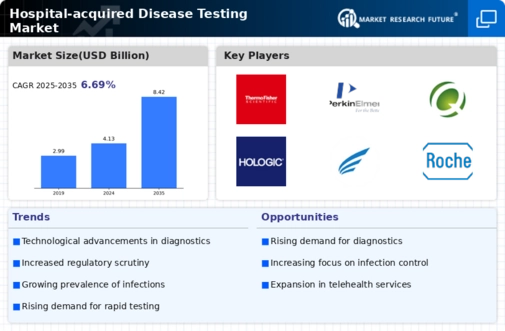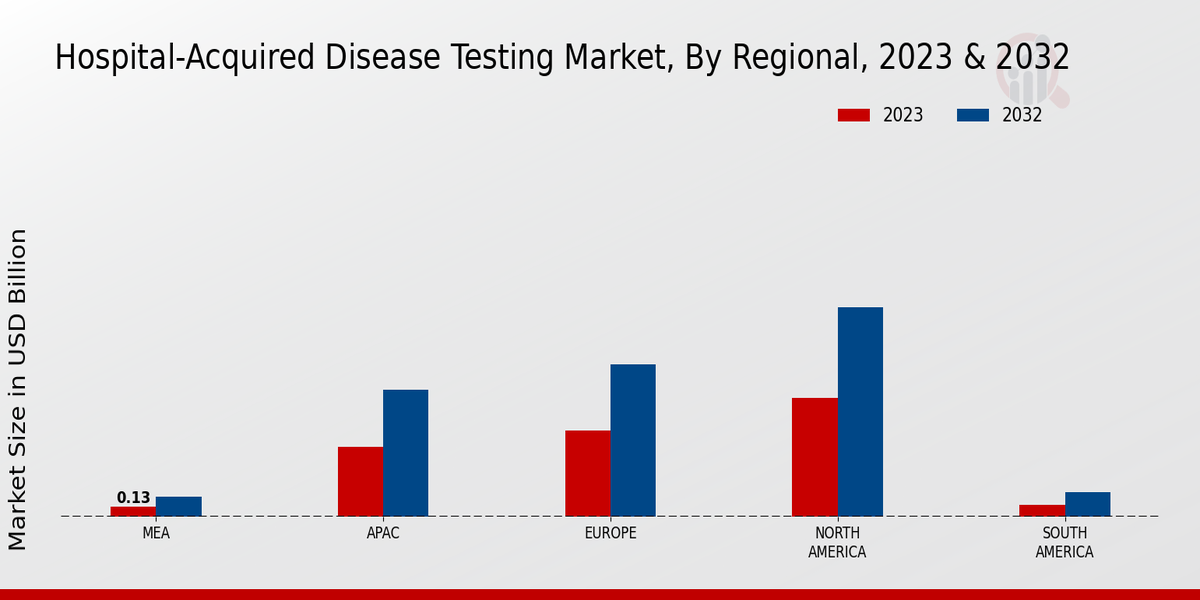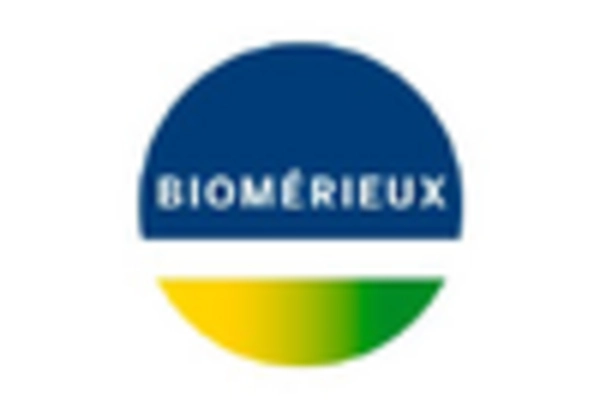The global hospital-acquired disease testing market is characterized by a complex landscape of well-established players and emerging companies striving for competitive advantage. As the incidence of nosocomial infections rises due to various factors such as antibiotic resistance and patient vulnerability, there is an increasing demand for testing solutions that are efficient and accurate.
The market dynamics are influenced by extensive research and development efforts as manufacturers invest in innovating diagnostic technologies, including molecular diagnostics, immunoassays, and rapid testing solutions.
Competitive insights reveal a focus on technological advancements, partnerships, and acquisitions as key strategies for companies aiming to enhance their product offerings and strengthen their market position. Additionally, regulatory compliance and sustainable practices are becoming increasingly important as stakeholders seek reliable and responsible testing mechanisms in the healthcare sector.
Thermo Fisher Scientific has established itself as a major player in the global hospital-acquired disease testing market through its commitment to innovation and quality. The company's extensive portfolio includes a range of diagnostic tests specifically designed to detect pathogens that cause hospital-acquired infections.
This focus on developing high-performance products underlines its strength in delivering reliable results rapidly, which is crucial in clinical settings where timely intervention can significantly impact patient outcomes.
Moreover, Thermo Fisher Scientific's strong market presence is supported by its robust distribution networks and collaborations with healthcare providers, ensuring that its testing solutions reach a wide audience.
The company also benefits from ongoing investments in research and development, allowing it to stay ahead of competitors by introducing cutting-edge technologies that meet the evolving industry’s needs.
PerkinElmer is another key player in the global hospital-acquired disease testing market known for its advanced diagnostic solutions and emphasis on leveraging technology to improve patient care. The company offers a range of products focused on the detection and monitoring of infections that can be acquired in hospital settings, reinforcing its reputation for reliability and precision.
PerkinElmer strengthens its market position with innovative testing platforms that utilize automation and multiplexing capabilities, enhancing throughput and allowing healthcare facilities to manage multiple tests simultaneously.
The company's strategic initiatives, including partnerships and collaborations within the healthcare community, contribute to the effective distribution of its products, ensuring that hospitals and clinical labs have access to effective testing solutions.
With its continuous investment in developing accurate and efficient testing technologies, PerkinElmer remains a formidable competitor in the market, committed to addressing the challenges posed by hospital-acquired diseases.


















Leave a Comment